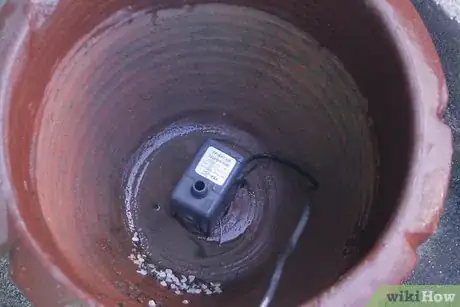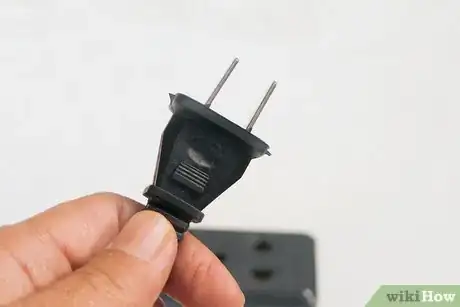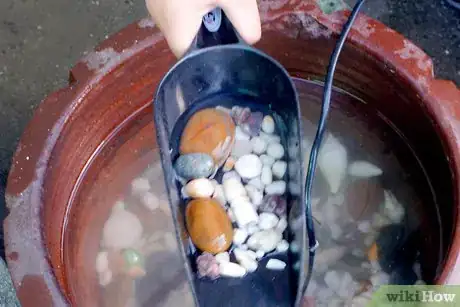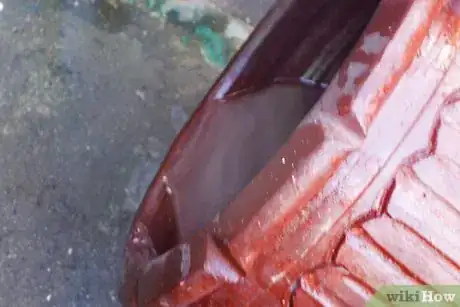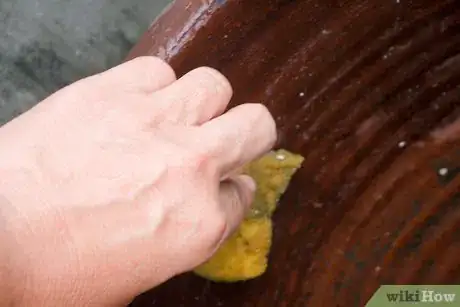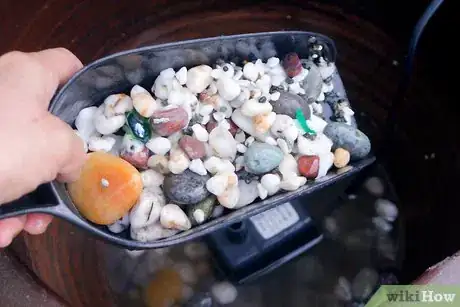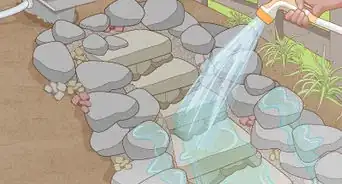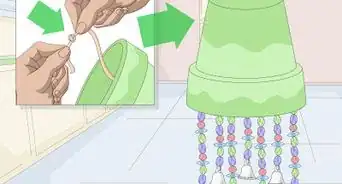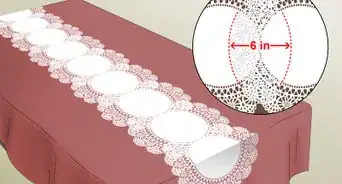wikiHow is a “wiki,” similar to Wikipedia, which means that many of our articles are co-written by multiple authors. To create this article, 9 people, some anonymous, worked to edit and improve it over time.
This article has been viewed 86,338 times.
Learn more...
Your indoor fountain can be kept in clean, optimal condition when you take steps to maintain your fountain on a routine basis. Although indoor fountains may be exposed to fewer natural elements, they can still develop algae and bacterial growth or experience low water levels due to evaporation. In addition to performing general maintenance on your indoor fountain, you must also clean the inside of your fountain and the pump at least once per month to prevent algae and mineral deposits from forming. With regular, proper care and maintenance, you can maintain the functionality and appearance of your indoor fountain and all its working components.
Steps
General Maintenance
-
1Keep your fountain pump submerged in water at all times. This will help circulate the water in your fountain and keep it filtered, in addition to minimizing the growth of algae. Your fountain pump may also become dry and burn out if it is not submerged in water consistently.[1]
- Examine the water level around your fountain pump on a daily basis. This will allow you to become familiar with how often you need to add water to the fountain.
- Add water to your fountain as needed. This factor will vary depending on the indoor climate in which the fountain is located. For example, if the fountain resides in a warm, dry indoor climate, you may need to add water to the fountain on a daily basis.
-
2Keep your fountain pump powered on constantly. This will help keep your fountain water clean and prolong the life of your pump; as turning the power off and on continually may cause the motor in the pump to wear at a faster pace.
- Ask a friend or family member to help maintain the water level in your fountain when you need to travel. This will prevent you from having to power off the fountain completely.
Advertisement -
3Use distilled water in your water fountain. Using distilled water is a natural way to keep your fountain clean and prevent algae growth; whereas tap water may contain minerals or other metals that can solidify and build up on the walls of your fountain and the pump.
Cleaning Procedure
-
1Turn off and unplug your fountain. This will eliminate your risk of electrical shock as you clean the fountain.[2]
-
2Remove any stones or pebbles from the inside of your fountain. Stones will need to be cleaned before they are placed back into the fresh water.
-
3Remove the fountain pump from the fountain.[3]
- Consult your fountain's manual or contact the manufacturer directly if you are unsure how to remove the pump safely from the fountain.
-
4Remove the water from your fountain. Depending on the size of your fountain, you can either empty the fountain over a sink or use a shop-vac to remove the water.[4]
-
5Clean your fountain and its components.
- Use a soft, non-abrasive sponge to avoid scratching or damaging the fountain's interior and working parts.
- Clean the fountain, pump, and stones using a cleaning mixture of warm water and mild liquid soap, or use a commercial calcium lime removal product. For an all-natural alternative, spray distilled white vinegar on the fountain's interior and parts, then scrub using a wet sponge.
- Use a toothbrush to clean any small, tough corners or spots that are hard to penetrate or reach with the sponge.
- Use a soft, clean rag or cloth to dry and remove any excess cleaning mixture from the fountain's interior and parts.
-
6Place the fountain pump and stones back into the fountain.
-
7Refill your fountain with fresh, clean water. The procedure for refilling your fountain will vary depending on its size.
- Pour bottled, distilled water into your fountain or use tap water from a sink. Depending on the size of your fountain, you can refill the fountain from the inside of a sink or use a bucket to transport the water from the sink over to the fountain.
-
8Plug in your indoor fountain and power the fountain on.
- Observe the fountain for a few minutes to make sure the pump is properly re-installed, and that the fountain work efficiently.
Community Q&A
-
QuestionHow do I take care of an indoor fountain?
 Community AnswerWipe it down twice a week and change the water if it is smelly or discolored. Clean any pebble rocks every few weeks too.
Community AnswerWipe it down twice a week and change the water if it is smelly or discolored. Clean any pebble rocks every few weeks too. -
QuestionAfter cleaning, can I leave it empty and unplugged for a few weeks?
 TC WilliamsCommunity AnswerYes, if it is unplugged it can remain out of water for any length of time.
TC WilliamsCommunity AnswerYes, if it is unplugged it can remain out of water for any length of time. -
QuestionHow can I clean off the lime buildup from my indoor fountain?
 C GraceCommunity AnswerUse a commercial lime removal product to soak it off. Rinse well. Lime buildup is probably coming from your tap water, so switch to the recommended distilled water.
C GraceCommunity AnswerUse a commercial lime removal product to soak it off. Rinse well. Lime buildup is probably coming from your tap water, so switch to the recommended distilled water.
Warnings
- Do not use a copper cleaning product on your fountain if it is made from copper with a powder-coat finish. Copper cleaning products will remove the powder-coat finish and may diminish your fountain's appearance.⧼thumbs_response⧽
- Do not clean your indoor fountain with bleach or similar abrasive cleaning solvents or sponges. The properties and chemicals used in bleach and other abrasive cleaning products may cause your fountain's elements and parts to erode.⧼thumbs_response⧽
Things You'll Need
- Distilled water
- Shop-vac
- Soft sponge
- Mild liquid soap
- Toothbrush
- Soft rag or cloth
- Calcium lime removal product (optional)
- Distilled white vinegar (optional)
References
- ↑ https://www.hayneedle.com/tips-and-ideas/water-fountain-maintenance-guide/
- ↑ https://www.serenityhealth.com/wall_fountain_cleaning_guide-i-195-l-en.html
- ↑ https://www.serenityhealth.com/wall_fountain_cleaning_guide-i-195-l-en.html
- ↑ https://www.hayneedle.com/tips-and-ideas/water-fountain-maintenance-guide/
- http://www.serenityhealth.com/wtr_water_fountain_care.html
About This Article
Your indoor fountain can develop algae and bacterial growth, so perform general maintenance on it to help it run smoothly. Keep your fountain pump submerged in water at all times to help circulate the water and keep it filtered. This will also help minimize the growth of algae. Another way to reduce algae and keep your fountain clean is to use distilled water instead of tap water, which can lead to a build-up of minerals. Keeping the pump powered on constantly will also help keep the water clean and prolong the life of your pump. To learn how to clean your fountain, keep reading!
